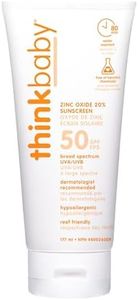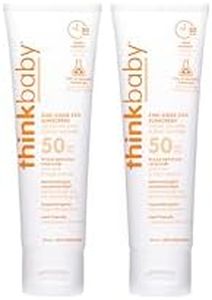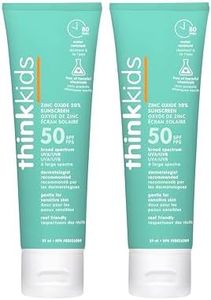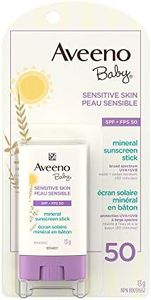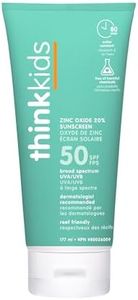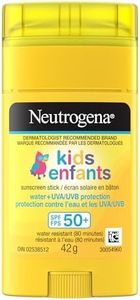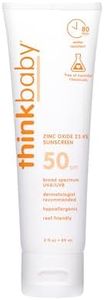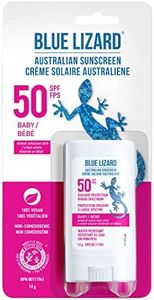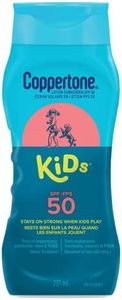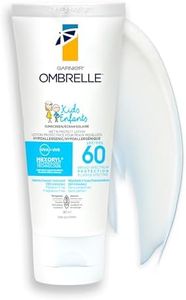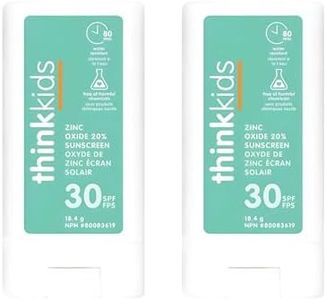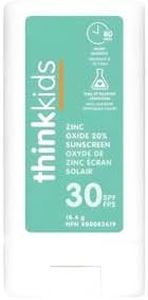We Use CookiesWe use cookies to enhance the security, performance,
functionality and for analytical and promotional activities. By continuing to browse this site you
are agreeing to our privacy policy
10 Best Face Sunscreen For Kids
From leading brands and best sellers available on the web.Buying Guide for the Best Face Sunscreen For Kids
Choosing the right face sunscreen for kids is important to protect their sensitive skin from harmful sun rays. Kids' skin is more delicate and can burn more easily, so it's essential to pick a sunscreen that offers strong protection, is gentle, and is comfortable for them to wear. When shopping, focus on the key features that make a sunscreen safe and effective for children, and always consider your child's specific needs, such as skin sensitivity or outdoor activity level.SPF (Sun Protection Factor)SPF measures how well a sunscreen protects the skin from UVB rays, which are the main cause of sunburn. The higher the SPF number, the greater the protection. For kids, SPF 30 to 50 is generally recommended. SPF 30 blocks about 97% of UVB rays, while SPF 50 blocks about 98%. If your child will be outdoors for extended periods or has very fair skin, a higher SPF may be better. For everyday use, SPF 30 is usually sufficient. Always reapply sunscreen every two hours, regardless of SPF.
Broad-Spectrum ProtectionBroad-spectrum sunscreens protect against both UVA and UVB rays. UVA rays can cause long-term skin damage and aging, while UVB rays cause sunburn. It's important to choose a sunscreen labeled 'broad-spectrum' to ensure your child is protected from both types of rays. This is especially important for kids who spend a lot of time outdoors, as both types of rays can harm their skin.
Water ResistanceWater resistance means the sunscreen will stay effective for a certain amount of time while your child is swimming or sweating. Water-resistant sunscreens are usually labeled with a time, such as 40 or 80 minutes. If your child will be swimming or playing sports, choose a water-resistant sunscreen and remember to reapply it after swimming, sweating, or towel drying.
Type of Ingredients (Mineral vs. Chemical)Sunscreens use either mineral (physical) or chemical ingredients to protect the skin. Mineral sunscreens use zinc oxide or titanium dioxide and sit on top of the skin to reflect UV rays. They are often recommended for kids because they are less likely to cause irritation and start working immediately. Chemical sunscreens absorb UV rays and may be lighter in texture, but some children with sensitive skin may react to them. If your child has sensitive skin or allergies, a mineral sunscreen is usually the safer choice.
Fragrance and AdditivesSome sunscreens contain added fragrances, dyes, or other ingredients that can irritate sensitive skin. For kids, it's best to choose a sunscreen that is labeled 'fragrance-free' or 'for sensitive skin.' This reduces the risk of allergic reactions or irritation, especially for children with eczema or other skin conditions.
Texture and Ease of ApplicationSunscreens come in various forms, such as lotions, creams, sticks, and sprays. Lotions and creams are easy to spread and ensure even coverage, which is important for the face. Sticks are convenient for quick touch-ups, especially around the eyes. Sprays are easy to apply but can be harder to control and may not provide even coverage. Choose a texture that your child is comfortable with and that makes it easy for you to apply thoroughly.
